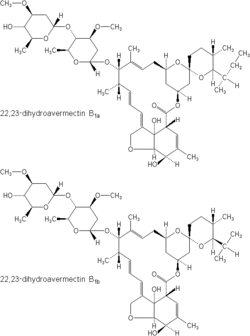V K Vijayan(*). VP Chest Institute, University of Delhi, Delhi, India.
PURPOSE: Tropical eosinophilia (TE) results from a heightened immunologic response to the human filarial parasite. TE therefore, responds to treatment with diethyl carbamazine, an antifilanal drug. As Ivermectin has also been found to have antifilarial activity, a study was planned to know the value of Ivermectin in the treatment of TE.
METHODS: Eight patients fulfilling the diagnostic criteria of TE were included in the study. All patients had clinical, hematological, chest radiological and pulmonary function (spiromet lung volumes and diffusing capacity) evaluations prior to starting the treatment. The lower respiratory tract inflammation was assessed using the technique of bronchoaiveolar lavage (BAL). All patients were treated with Ivermectin 6mg daily for two consecutive days. Clinical hematological chest radiological, pulmonary function and BAL studies were repeated two weeks after treatment. Paired t test was used for statistical analysis.
RESULTS: Despite treatment with Ivermectin, respiratory symptoms and chest radiological abnormalities persisted in all patients. There were also no significant changes in hematological (Table-1), pulmonary function (Table 2) and BAL findings (Table 3) in these subjects after treatment (p [is greater than] 02 for all comparisons).
Table 1: Hematological findings
Table 2: Pulmonary function
Table 3:BAL findings
N = neutrophils, L = lymphocytes, E = eosinophils, M = macrophages, AEC = absolute eosinophil count, / = litres. FVC = forced vital capacity, [FEV.sub.1] = forced expiratory volume in one second, FRC = functional residual capacity, TLC= total lung capacity, TLCO= single breath transfer factor for carbon monoxide.
CONCLUSION: Ivermectin, an antifilarial drug is not useful in the treatment of tropical eosinophilia.
COPYRIGHT 2000 American College of Chest Physicians
COPYRIGHT 2001 Gale Group



